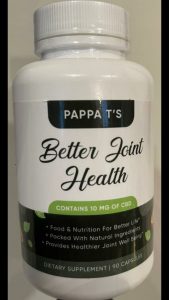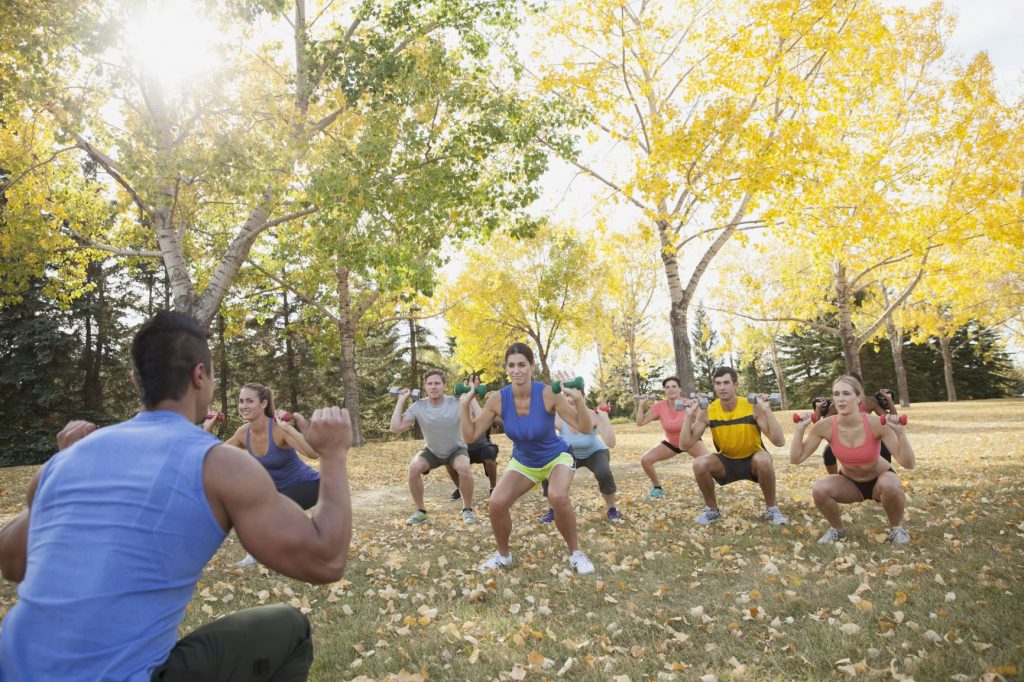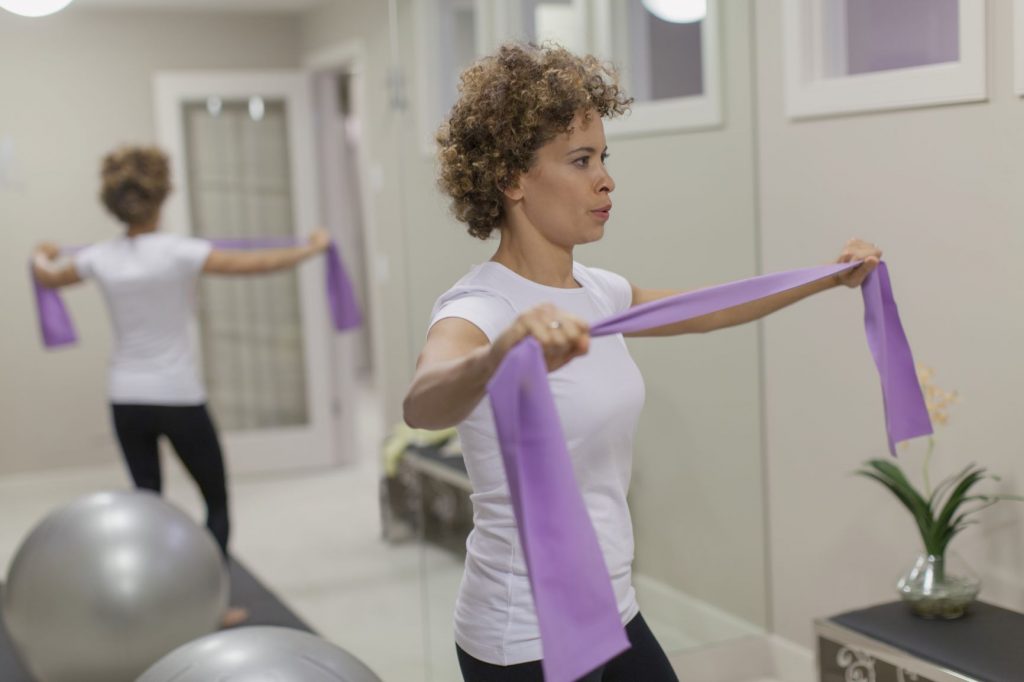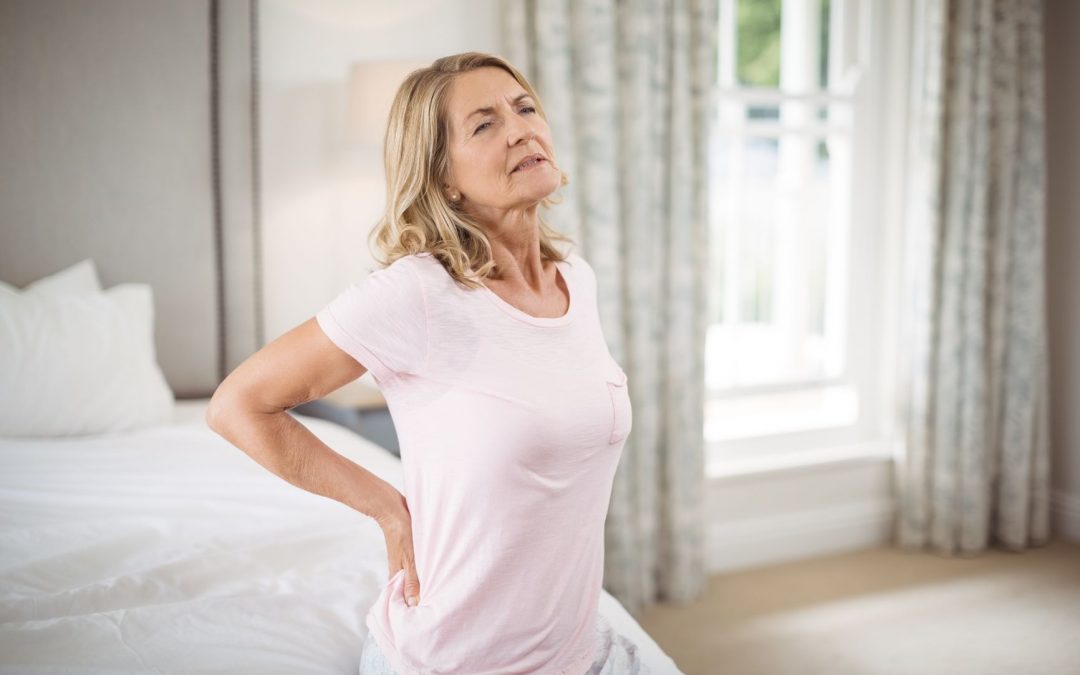There are common causes to why pain in the lower back is often accompanied by pain in the hip, even some unfavorable health conditions or injuries can affect nerves in the lower back and hip.
In this article, ways to relieve lower back and hip pain are discussed alongside various treatment options. The body structure of the hip and back is made up of various parts that can be injured or worn out, and oftentimes people may notice this discomfort or pain on the left, right, or both sides of the body. Hip pain is known to come from the hip, but most of the time hip pain comes from the back. Just like hip pain; back pain doesn’t always come from the back, most times it comes from the hip. In a study carried out by the National Institute of Neurological Disorders and Stroke, 80 to 90 % of the world’s population were recorded to develop incapacitating back or hip pain at some point in their lives. Experiencing lower back pain is an everyday occurrence; after the common cold, back or hip pain has also been recorded to be the second most common reason why people miss work each day.
Back pain can easily be mistaken for hip pain or discomfort, the pain varies in intensity from a mild ache to a sharp or severe condition that affects one’s ability to move and quality of life. The joint of a hip is located near the spine. As a result, that, hip injuries can trigger back pain. When experiencing hip and lower back pain, one may also experience groin pain in the affected area, muscle stiffness, mild or severe pain while walking or moving, and even having trouble trying to sleep. When pain is felt in the hip or groin region, down to the thigh and knee, it is likely a hip issue, and if the pain is felt in the hip or buttocks region, the hamstring and calf, it is most likely a spine or lower back issue.
How To Relieve Lower Back and Hip Pain
Lower back and hip pain can be relieved through exercises and home remedies. A combination of rest, activity modification, and exercises can help relieve lower back and hip pain.
Order the Papa T’s Better Joint Health Naturally WITH CBD Capsules to help with your Lower Back Pain
Click the image below to place your order

Using Exercises to Manage or Relieve Lower Back and Hip Pain
Exercises are pivotal to relieving hip pain. Even though these exercises may cause momentary discomfort, they shouldn’t elongate the pain. If an exercise aggravates the pain, discontinue such an exercise or be gentler with it. People who have recently had hip surgery or replacement should consult a medical doctor or physio-therapist before undergoing any of these exercises. Stretching muscles around the hip can help in reducing stiffness and enhance joint mobility. A person should participate in these exercises when they are feeling the least amount of pain or stiffness. After a warm shower or bath is when the muscles are most relaxed, so this is a good time for such an exercise. Start with one or two exercises a day for three days a week. If this is convenient, try several exercises each day.
Exercises and stretches for hip pain:
- Knee lift
- Safety
- External hip rotation
- Double hip rotation
- Hip and lower back stretch
- Hip flexion
- Hip extension
- Hip abduction
- Heel-to-buttock exercise
- Mini squat
- Short-arc quadriceps exercise
- Quadriceps exercise
- Bridging
- Chair stand
- Abdominal exercise
People who experience hip pain or discomfort for more than an hour during these exercises should reduce the number of repetitions accordingly.
Resistant Training: The purpose of exercising is to strengthen the hip muscles which supports the hip joint, this can help to relieve pain. Resistance training is another form of exercise for the development of muscular strength. During resistance training, a person uses either low weights or their body mass to create resistance for their muscles to work against.
1- Knee Lift: Lie on the back, extending both legs flat along the floor keeping the left leg straight, pull the right knee up toward the chest, place both hands on top of the knee to help pull it in toward the chest. Hold the stretch for 10 seconds, let go of the knee and gently lower the leg towards the floor. Repeat this exercise on each knee about five or 10 times.
2- External Hip Rotation: Sit on the floor with both legs out, bend the knees and press the soles of the feet together, place a hand on top of each knee and gently push them towards the floor. Apply pressure to the knees until there is a stretch, but do not push them further than it is convenient for you. Hold the stretch for 10 seconds and then relax, repeat this at least five to ten times.
3- Double Hip Rotation: Lie flat on the back, bend the knees and bring them toward the body until the feet are flat on the floor, gently rotate the knees to the left lowering them towards the floor. Rotate the head to face the right while keeping the shoulders against the floor, hold this position for twenty to thirty seconds, slowly return both the head and knees to the starting position. Repeat this on the right side.
4- Hip and Lower Back Stretch: Lie flat on the back, bend the knees and bring them towards the body until the feet are flat on the floor, using the hands to pull both knees toward the chest. Breathe deeply, pulling the knees closer to the shoulders with each exhalation, go as far as it is comfortable, then hold the position for ten to thirty seconds and breathe normally.
5- Hip Flexion: Stand upright, extend one arm out to the side and hold on to a sturdy surface such as a wall, table, or chair for support, slowly raise the right knee to the level of the hip or as far as it is convenient while keeping the left leg straight. Only hold this position for a second before placing the left foot back on the floor. Do the same thing with the left knee. Repeat this exercise five to ten times.
6- Hip Extension: Stand upright with the legs straight and the feet shoulder-width apart, extend both arms out in front and hold on to a chair, table, or wall for support. Keeping the right leg straight, lift the left leg backward without bending the knee. Lift the leg as far as possible without causing any discomfort, then clench the buttock tightly and hold the position for 5 seconds. Repeat this stretch five to ten times on each leg. To increase resistance, try attaching small weights to the legs.
7- Hip Abduction: Stand upright, extend the left arm out to the side and hold on to something solid such as a chair, table, or wall. Starting with the feet together, lift the right leg out to the right side. Keep the left leg straight and avoid rotating the hips. Hold the position for five seconds and then slowly return the leg to the starting position. Do this exercise five to ten times on one leg, then repeat it on the other side.
8- Heel-To-Buttock Exercise: Stand upright with the legs straight and the feet shoulder-width apart. For support, hold on to a chair, table, or wall. Bending the left knee, bring the heel up towards the left buttock with the top of the foot facing the floor. Be sure to keep the right leg straight and align the knees. Slowly lower the leg and return to the starting position. Repeat the exercise on the right side. Try to repeat these five to ten times on each leg.
9- Mini Squat: Stand upright with the feet shoulder-width apart. If necessary, hold on to a chair, table, or wall for support. Keeping the back straight, gently lower the body by bending the knees until they are above the toes. The feet should remain flat on the ground. Hold this position for a few seconds, then slowly straighten the legs to return to the starting position. Repeat these mini squats five to ten times.

10- Short-Arc Quadriceps Exercises:
Lie flat on the back with a pillow or rolled-up towel beneath the right knee, slide the left foot back toward the buttock bending the knee, slowly lift the right foot off the floor while keeping the back of the right knee pressed against the pillow or towel. Hold the position for 5 seconds and then gently lower the right leg back to the starting position. Do five to ten lifts on each leg.
Home Remedies That Help to Relieve Lower Back Hip Pain
The chief of spine surgery for the Department of Neurological Surgery at Washington University School of Medicine in St. Louis, Wilson Ray, MD, says home remedies tend to be better when they’re combined than when done alone.
1- Try to Maintain Mobility: It can be a quick 30-minute walk or circling the block with your dog. Aim to get on your feet at least three times a week as “Being sedentary allows the muscles around the spine and in the back to become weak,” says Salman Hemani, MD, an assistant professor of orthopedics at Emory University School of Medicine in Atlanta. “That, in turn, can cause less support for the spine” and lead to long-term pain.
2- Try to Maintain A Good Posture: This helps to ease the pressure on your lower back. You can use tape, straps, or stretchy bands to help keep your spine in alignment. Aim to keep your head centered over your pelvis. Don’t slouch your shoulders or crane your chin forward. Improper posture due to slouching or straining at a desk may lead to lower back pain and other muscle aches. Using ergonomics to modify a workstation can help reduce pain due to poor posture. If you work in front of a screen, rest your arms evenly on the table or desk and keep your eyes level with the top of the screen. Get up from your chair, stretch and walk regularly. A person should ensure their computer screen is at eye level and that their chair is at the correct height. If a person does any lifting for their job, they should squat and use their legs, and not their back for support. It is best to ask for help or use trolleys when moving very heavy objects.
3- Try to Get Enough Sleep: A person sleeping on their side should place an extra pillow between their knees for additional support. Studies show that sleep disturbances could make a pain in the back or hip worse. Lack of sleep can also affect how much pain a person can tolerate, according to another study. An uncomfortable mattress, pillows that are the wrong size, or simply not getting adequate sleep could trigger back pain. Most adults should be getting seven to nine hours of sleep a night, according to the Centers for Disease Control and Prevention (CDC). Proper comfort and alignment of the back are essential for sleep quality and avoiding back pain in the morning. Ensure the pillow is comfy enough to keep the back and neck in a straight line. People who sleep on their side should place an extra pillow between their knees.
A person should speak to a doctor if lack of sleep continues to be a problem. Sleep disorders are often treatable. Getting enough rest may help relieve pain and can improve a person’s overall health.
4- Try to Manage or Reduce Stress: Stress can trigger muscle tension and painful spasms, including in the back. If long-term stress or a traumatic event seems to have caused back pain, a person can try stress-relief techniques, such as:
Mindfulness meditation: One study showed that mindfulness-based stress reduction improved back pain. Mindfulness involves being aware of what the body is doing and using meditation techniques to assist with the pain.
Deep breathing: Taking deep breaths in and out for several minutes can calm the body’s stress response.
Progressive muscle relaxation: This involves tensing and relaxing muscles in the body, focusing on one muscle group at a time. Lying on their back, a person can start with their feet and gradually move up to the shoulders.
Guided imagery: This involves focusing on specific mental images to bring about a feeling of relaxation. One study found guided imagery and music help with work-related chronic stress.
5- Try to Maintain A Healthy Weight: Shedding extra pounds lightens the load on your lower back. “Weight loss helps [with pain] because it reduces the amount of mechanical force onto the spine,” Hemani says. If you need help, ask your doctor for advice on a diet and exercise plan that may work best for you.
6- Quit Smoking: Research suggests that if you smoke, you may be four times more likely than nonsmokers to have degenerative disk disease or other spine problems. Nicotine in cigarettes and other tobacco products can weaken your spinal bones and take away vital nutrients from the spongy disks that cushion your joints. A healthy spine will keep your back flexible and its muscles from getting stiff and sore.
7- Try Heat and Ice: You may have heard that one is better than the other for relief from back pain. The short answer is that the best option is whichever works for you. Studies show that heat and cold are effective ways to get relief from back pain. Ice packs are most beneficial when a person uses them directly after an injury, such as a strain. Applying an ice pack wrapped in a towel directly to the back can reduce inflammation. Cold may also provide a numbing effect for sudden, intense back pain. A person can use cold packs designed for pain relief, or in a pinch, use a bag of ice or frozen vegetables covered with a cloth to protect the skin from frostbite. It is best not to apply ice for more than 20 minutes at a time.
A heating pad can also relieve stiff or achy muscles. People should be sure to read and follow the instructions on any heating pad and test the temperature carefully to ensure it is not too hot. If a heating pad is unavailable, a person can use a hot water bottle or heat a cloth bag of uncooked rice in the microwave. People should take care not to burn the skin with ice or heat. Usually, ice is best if your back is bothered by swelling or inflammation. A heating pad may be better if you’re trying to relax stiff or tight muscles. Hemani suggests limiting ice or heat treatment to 20 minutes at a time. And don’t use them if you’re also putting muscle-ache creams or ointments on your skin.
8- Use Food and Fruit Supplement: It’s best to get your vitamins and minerals from foods. But ask your doctor if supplements might help. For example, many people don’t get enough vitamin D, which is important for bone health. That can happen from lack of exposure to sunshine or because your body can’t absorb enough vitamin D from foods. Magnesium deficiency may lead to muscle weakness and cramps. And Hemani says turmeric, a vivid yellow spice that’s related to ginger, may help calm inflammation. Always talk to your doctor before you take any supplements.
Also, order Papa T’s Better Joint Health Naturally WITH CBD for fast Pain Relief
9- Use of Rolled-Up Towel: A rolled-up towel can be a handy tool for back pain relief. Try putting it under your pelvis when you’re lying down. Let your hips relax over the towel and help stretch out the tension in your lower back. A back brace can sometimes help, especially after an injury or surgery. But they’re not meant to be worn too often or for too long. “People become dependent on it, and it allows those muscles to become lazy,” Ray says.

10- Wearing of Shoes That Fits: Wearing shoes that do not fit or that offer no support could cause muscle strains in the back, legs, and even neck. High heels, for example, can throw off the body’s alignment, leading to lower back pain. One study found a link between wearing high heels for long periods and having back pain. Wearing very flat shoes can also put added strain on the feet and back. If a person experiences recurrent back pain, they should consider switching to shoes that fit correctly and support the feet. A podiatrist or foot specialist can help a person find proper footwear if necessary.
Conclusion
There are various possible causes of lower back and hip pain, spanning from muscle strains, injuries to arthritis and inflammatory disorders. Lower back and hip pain are one of the most common physical ailments and studies show that 80 to 90 percent of the population have pain at some point in their lives, usually in the lower back. Sudden or severe back pain should be checked by a doctor or a physical therapist. That also goes for pain that won’t go away.
In this article, home remedies and exercises were highlighted to be helpful in the relief of lower back and hip pain. Gently stretching and exercising the hips can help relieve pain, increase mobility, and strengthen muscles. There are many exercises to choose from, but people can experiment to find the ones that work best for them and then incorporate these exercises into a routine. A person can also work with a physical therapist to design an individualized exercise plan to suit their needs. People with severe, persistent, or worsening hip pain should see a doctor. It is important to stop or reduce any exercises that cause or aggravate hip pain.

